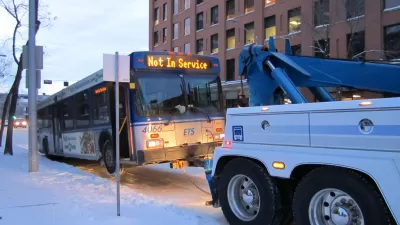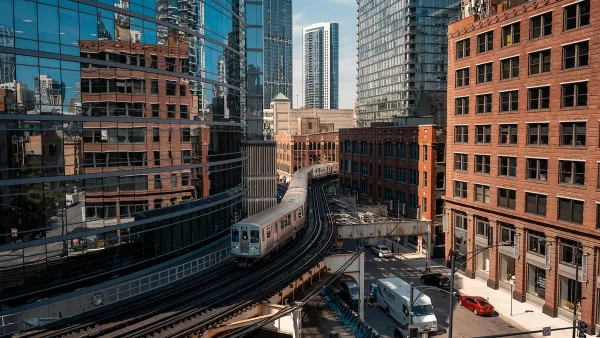Vox brings out the subtleties in explaining the underperformance of the U.S. public transportation system.

Joseph Stromberg writes an article about the state of transportation in the United States that's part explainer and part polemic by asking the question: "The US spends a ton of money on public transportation. So why is it so terrible?"
After citing some statistics to back up the claim that transit systems in Europe and Asia outperform U.S. transit, Stromberg first debunks a common scapegoat for the woes of transit in the United States: "Most of our cities and suburbs were built out after the 1950s, when the car became the dominant mode of transportation. Consequently, we have sprawling, auto-centric metropolises that just can't be easily served by public transportation."
Canada, however, can be cited as an example of country with a similar development pattern that managed to avoid the ravages of poor transit. Finally, Stromberg settles on his answer: "European, Asian, and Canadian cities treat it as a vital public utility. Most American policymakers — and voters — see transit as a social welfare program."
The article goes into a lot more detail about how exactly the politics of mobility achieved its effect in the United States, as well as describing more consequences of, and potential responses to, the state of public transportation.
FULL STORY: The real reason American public transportation is such a disaster

Planetizen Federal Action Tracker
A weekly monitor of how Trump’s orders and actions are impacting planners and planning in America.

Map: Where Senate Republicans Want to Sell Your Public Lands
For public land advocates, the Senate Republicans’ proposal to sell millions of acres of public land in the West is “the biggest fight of their careers.”

Restaurant Patios Were a Pandemic Win — Why Were They so Hard to Keep?
Social distancing requirements and changes in travel patterns prompted cities to pilot new uses for street and sidewalk space. Then it got complicated.

California Homeless Arrests, Citations Spike After Ruling
An investigation reveals that anti-homeless actions increased up to 500% after Grants Pass v. Johnson — even in cities claiming no policy change.

Albuquerque Route 66 Motels Become Affordable Housing
A $4 million city fund is incentivizing developers to breathe new life into derelict midcentury motels.

DC Area County Eliminates Bus Fares
Montgomery County joins a growing trend of making transit free.
Urban Design for Planners 1: Software Tools
This six-course series explores essential urban design concepts using open source software and equips planners with the tools they need to participate fully in the urban design process.
Planning for Universal Design
Learn the tools for implementing Universal Design in planning regulations.
Heyer Gruel & Associates PA
JM Goldson LLC
Custer County Colorado
City of Camden Redevelopment Agency
City of Astoria
Transportation Research & Education Center (TREC) at Portland State University
Camden Redevelopment Agency
City of Claremont
Municipality of Princeton (NJ)





























